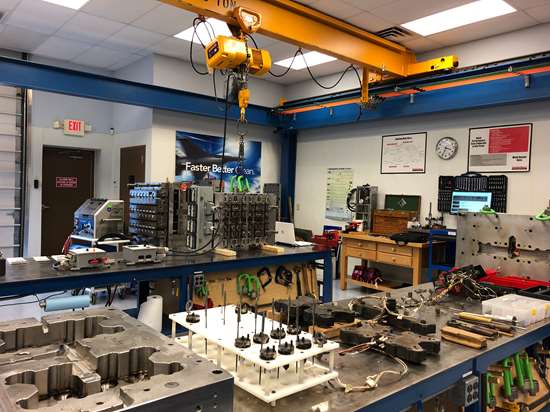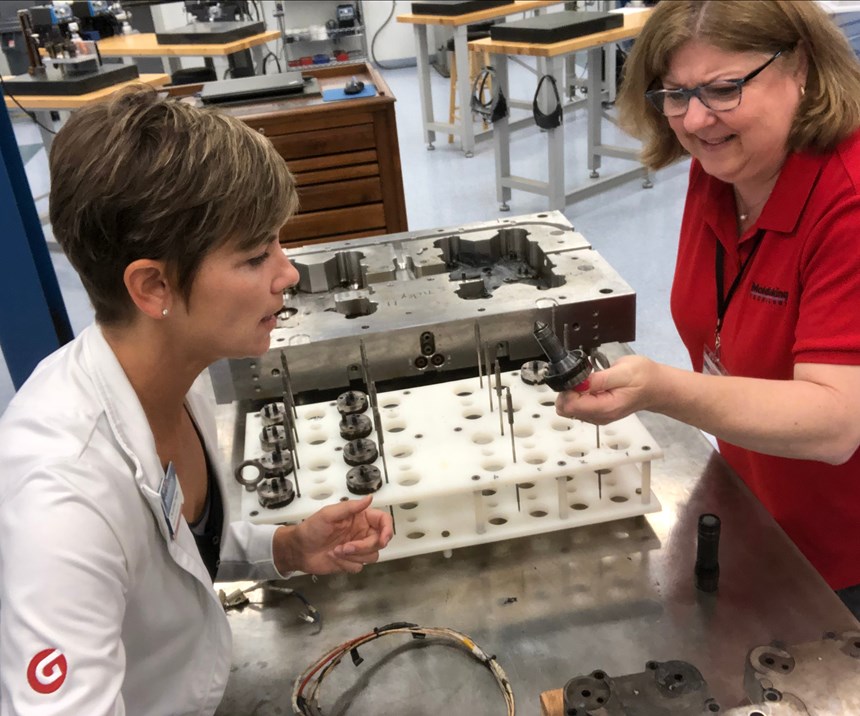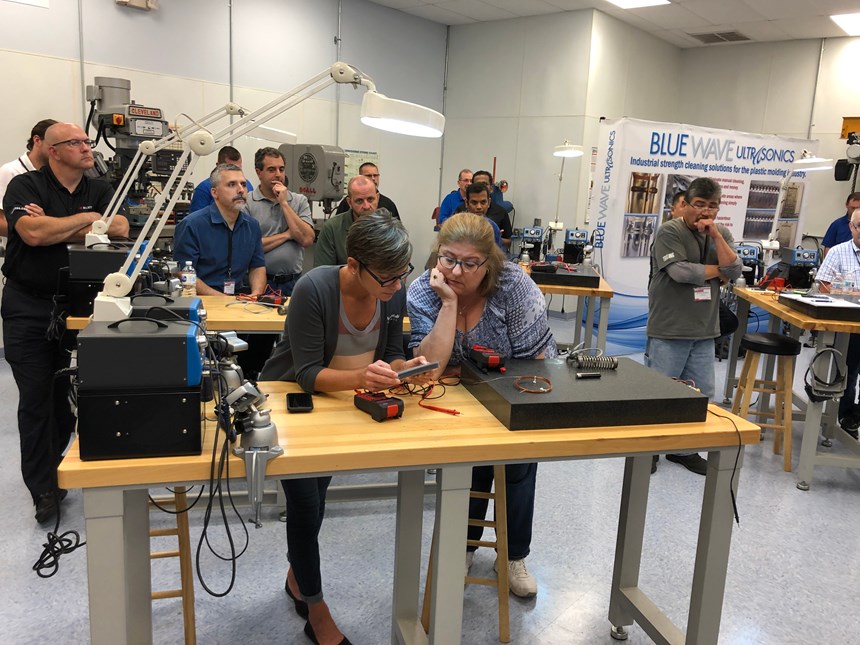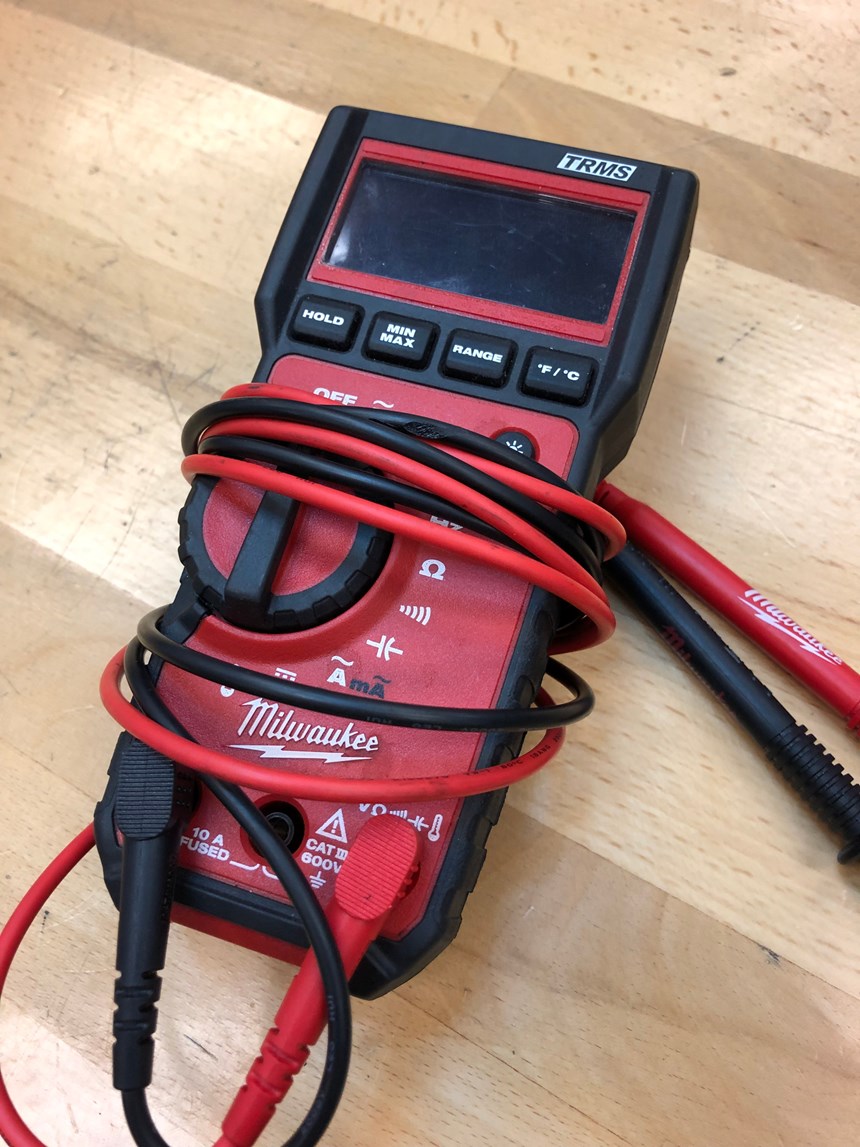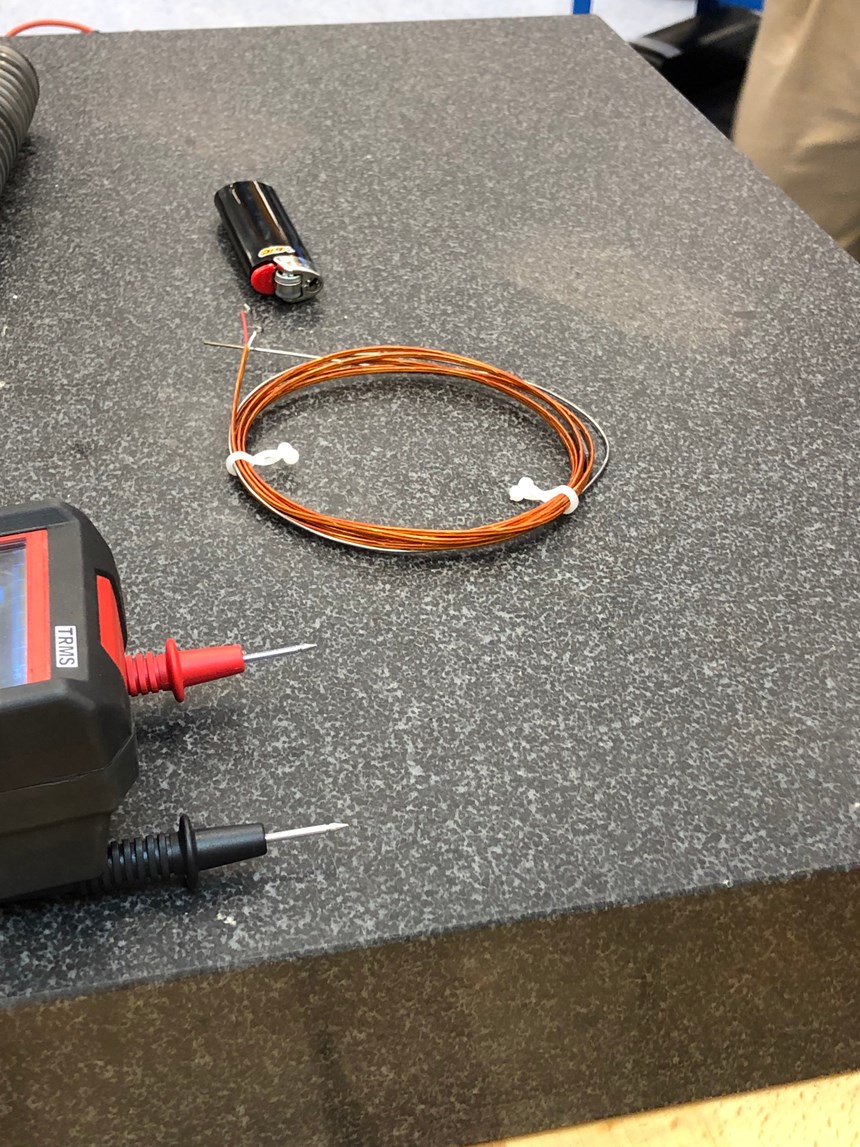Getting Hot and Heavy during a Little Hot Runner Training
If a mold is the heart of a molding system, then the hot runner system is the heart of a hot runner mold, and I recently learned that there is a lot to know when it comes to designing and maintaining these systems to ensure optimal mold and part quality and performance.
#education
MoldMaking Technology Editorial Director Christina Fuges interviews participants of the Mold Trax Hot Runner Extravaganza Workshop about their technology tips and takeaways.
Understanding the relationship between the mold and the hot runner system is important for mold builders, toolroom personnel, molders and OEMs because a hot runner is the melt delivery system that moves material into the mold to make a part.
These systems include hot halves/manifolds, nozzles, gates and temperature controllers all of which need to be monitored, maintained and cleaned for optimal cycle time, final part quality, long mold life and minimal maintenance. Complicating matters are the options for hot runner systems, nozzle tips and nozzle heaters.
All of this makes a hot runner maintenance program with purchasing, processing and preventive maintenance training vital to improve performance, and to meet final part production deadlines and quality.
Recently, I attended a three-day hot runner workshop at MoldTrax with MoldMaking Technology Senior Editor Cyndi Kustush, not only to learn from more than 10 leading hot runner technology and service suppliers, to hear about challenges straight from toolroom personnel across North America, but also to get our hands a little dirty while learning about proper hot runner preventive maintenance.
In moldmaking and molding MoldTrax President Steve Johnson highly recommends that once a manifold hits the bench, a toolroom technician should always take Ohms readings of all thermocouples and heaters. With that in mind, our hands-on time out on the shop floor involved testing heaters and thermocouples for proper ohms and insulation resistance under the instruction of Manny Diaz from Fast Heat.
Featured Content
Ohms is a measure of resistance (M = Mega x 10 6 power 1 m, K = Kilo x 10 3 power 1 k, m = 0.001 milo of a volt). The reading indicates continuity and wattage of the elements. For example, volts 2 / ohms (resistance) gives you the wattage.
Here are some tips when using an Ohmmeter:
-
Get a self-regulating Ohmeter.
-
Don’t buy a cheap one.
-
Use it on every hot runner mold that lands on your bench. Practice makes perfect.
-
Make sure it is equipped with overload protection, large easy-to-read screen in both daylight or a dark display.
-
Ensure it has a rugged case that can take a drop.
-
Make sure it has long, easily stored leads.
-
Offer audible alerts.
-
Use the controller (incrementally or via a smart controller) to set a “recipe” for a soft start.
-
Use a soft start (intervals) when heating everything up as the manifold heats up differently from other components.
-
Perform an organized disassembly, so the right heater goes back in right cavity.
Here are some tips when testing thermocouples:
-
Put your multi-meter in the Ohms range.
-
Thermocouples (T/C) are the feedback loop for the temperature of a manifold.
-
Read the temperature by measuring the difference in expansion between two dissimilar metals.
-
Only the tip of the thermocouple matters when measuring.
-
Note that the resistance value increases with thermocouple wire length.
-
0 Ohms is the ideal value but typically it will read about 2 – 10 Ohm with 40” of lead wire.
-
Standard thermocouples come with red (+) and blue (-) wire colors.
-
North American thermocouples come with white (+) and red (-) wire colors.
-
A magnet will be attracted to the positive lead of the thermocouple.
-
When testing connectivity between the positive and negative leads, keep in mind that the audible alarm will not work as the thermocouple will be grounded.
-
Map and document the mold wiring of T/C then use the data to predict when heaters may fail and when to perform some action on the bench before running the mold in the machine.
-
RELATED CONTENT
-
Advantages and Disadvantages of Copper and Graphite Electrodes
Both copper and graphite provide approximately the same end result, so it is important for a shop to consider the advantages and disadvantages of each material in order to discover what would work best in their shop floor environment.
-
A Different Approach to Mold Venting
Alternative venting valves can help overcome standard mold venting limitations and improve mold performance.
-
How to Deal with Graphite Dust, Part 1
A review of the characteristics and considerations when handling graphite dust.




